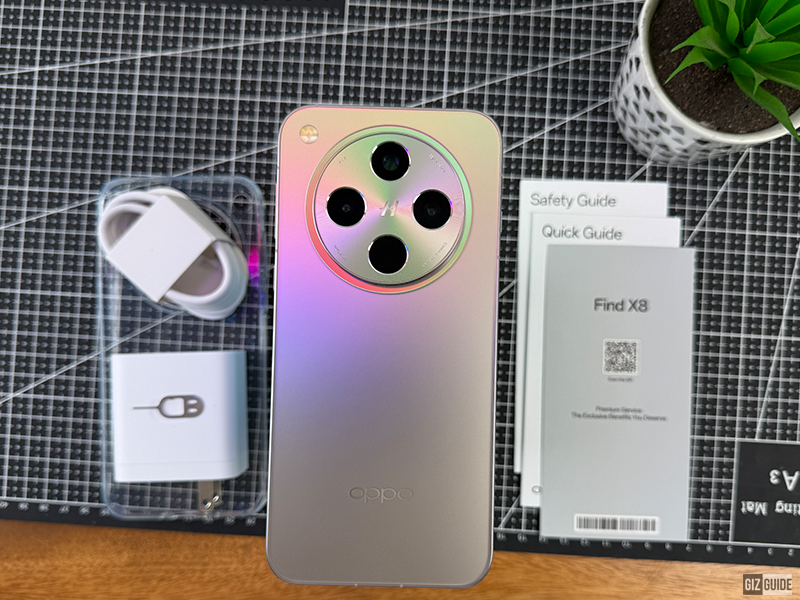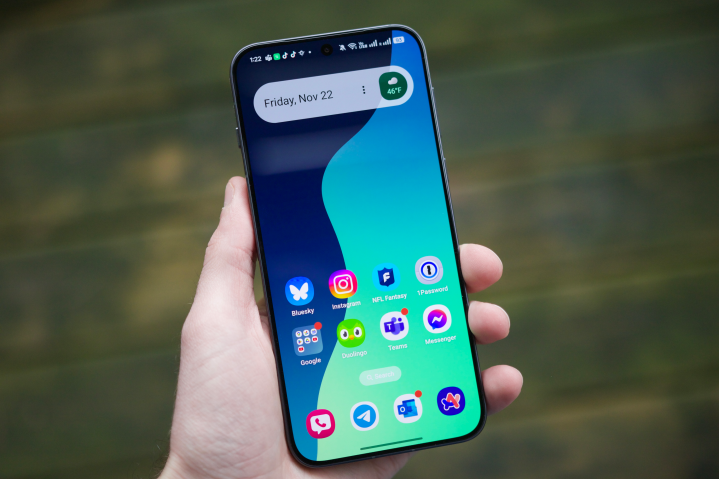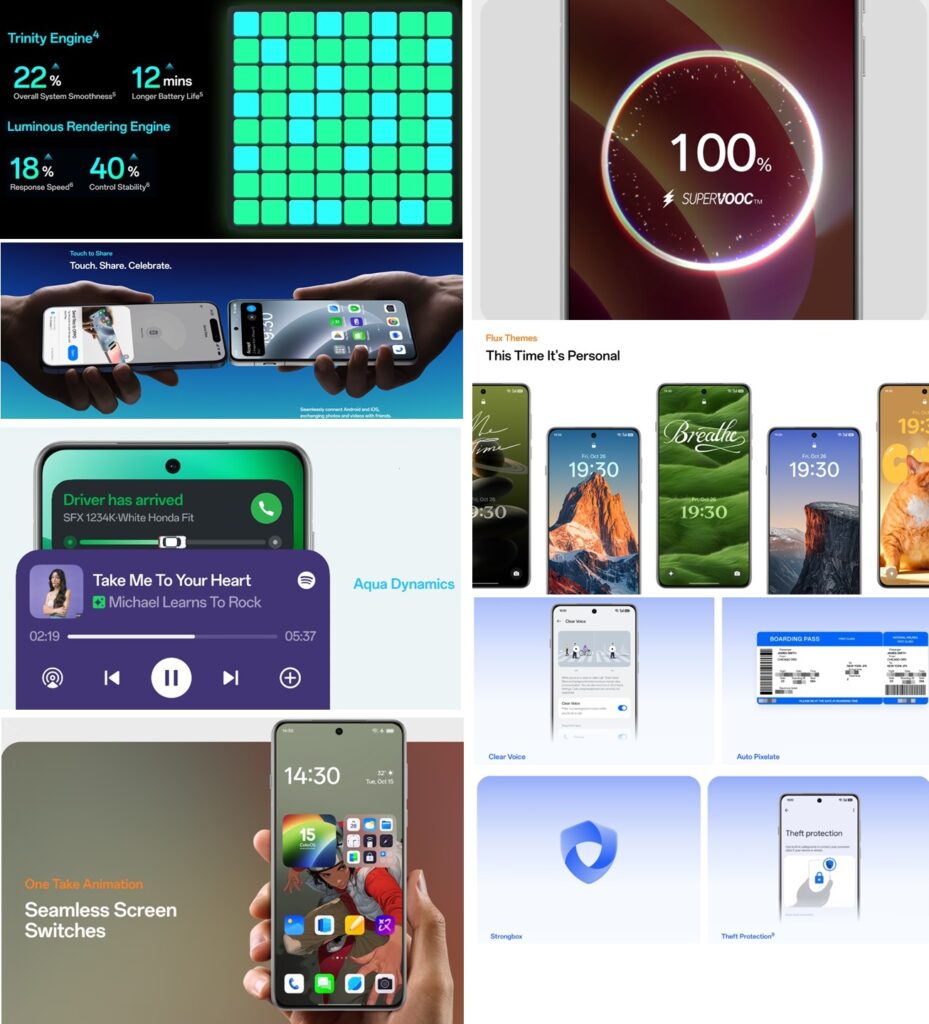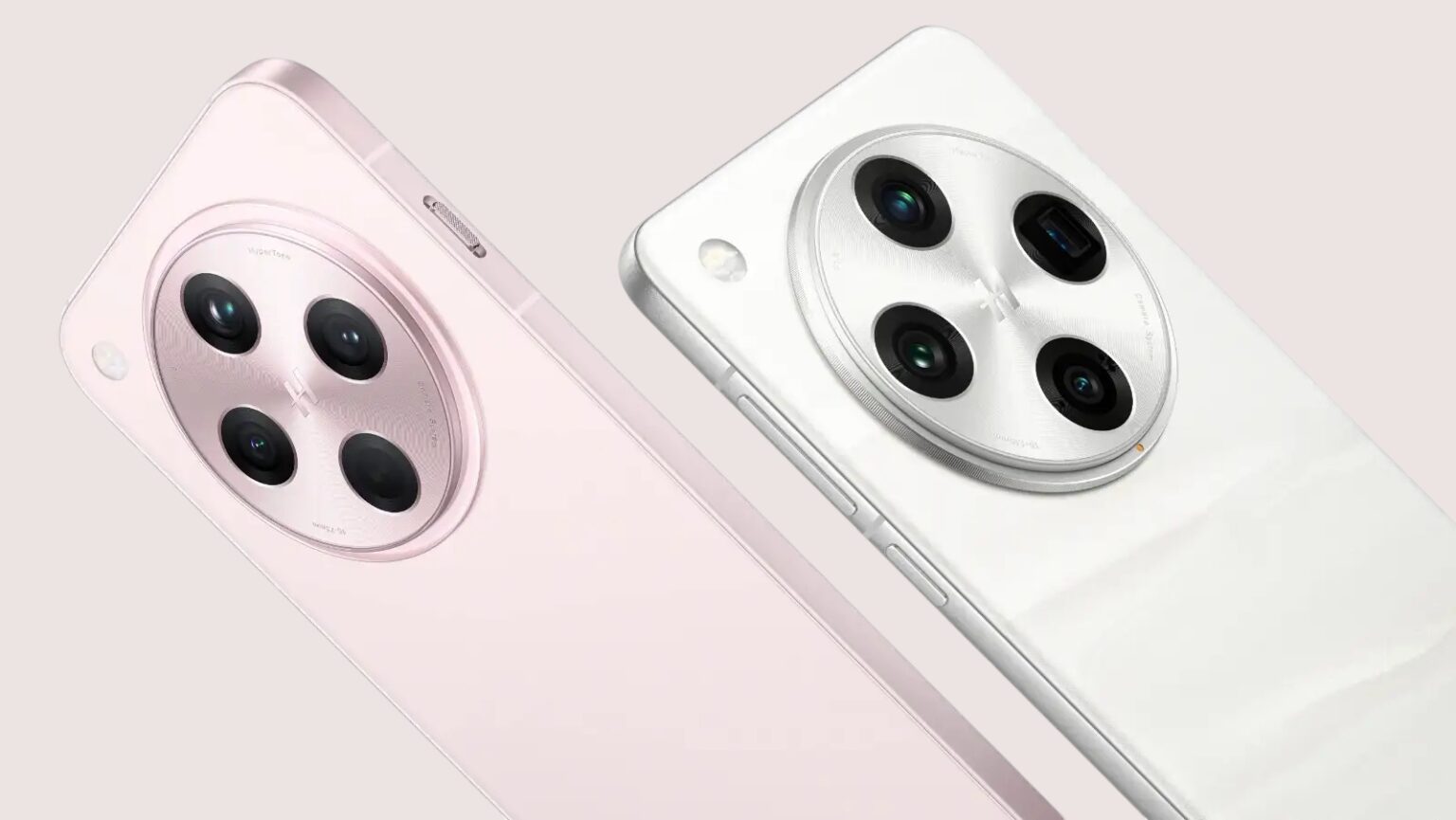2024 delivered a variety of standout smartphones, and the Oppo Find X8 stands out among them—at least in performance. After a few years of absence, Oppo’s Find X series is back on the global market, and the Find X8 marks its return, though with a design philosophy that feels distinctly familiar.
The signature central camera bump that debuted with the Find X6 in March 2023 makes its return, a design element now shared across the Oppo lineup and even with sister brand OnePlus.
While the Find X8 Pro is the high-end choice for those looking for a larger, more powerful device, the standard Find X8 offers a more compact option without compromising on performance. Powered by the Dimensity 9400 processor, it comes with a large battery and fast 80W charging, making it a strong contender in the flagship category—even if its aesthetic breaks little new ground.
But how does it really perform in daily use?
We’ve gathered insights from real-world reviews to give you a clearer picture of what to expect and what to consider before making the jump to this capable, if visually familiar, flagship.
Read Also: Meet the sleek OPPO RENO 8 5G: brilliance and heat combined
What we like:
- IP69 rating.
- Impressive battery life.
- Mediatek SoC is almost as good as the latest Snapdragon.
- Five OS updates and six years of security patches.
- Competent camera system with great zoom, closeups, and surprisingly good low-light video.
- eSIM and 5G support.
What to consider before buying
- The EU model lacks a charger in the box.
- No dedicated camera button like the Pro.
- Lowlight camera performance may fall short.
- Limited accessory availability outside China.
- Weak vibration strength.
- No headphone jack.
Unboxing OPPO’s Find X8

The smartphone arrives in a sleek gray packaging, adorned with OPPO branding, and regulatory details. Upon opening, you’ll find the device itself, a transparent silicone case for added protection, and an 80W SuperVOOC wall adapter for fast charging. The box also includes a USB-A to USB-C cable, a SIM ejector tool, and essential documentation.
However, it’s worth noting that earphones are not included in the box.
Design

The OPPO Find X8 channels a refined version of the iPhone aesthetic, with brushed metal edges that closely resemble those of the iPhone 15 Pro and 16 Pro. Subtle softening at the top and bottom of the device ensures a comfortable grip, while the corner radius strikes a balance between the iPhone’s rounded corners and the sharper edges of the Galaxy S24 Plus.
At just 7.85mm thick and weighing 193g, the Find X8 is slim and lightweight. Its matte glass back resists fingerprints, maintaining a clean and polished look. With military-grade certification and an aluminum alloy frame, the Find X8 is built for durability, offering IP68/IP69 ratings to withstand dust, water, and extreme conditions.
One standout feature is the alert slider, a welcome addition borrowed from OnePlus. It lets you quickly toggle between silent, vibrate, and ring modes. Though positioned far from the power button, it remains a highly practical tool for managing notifications without unlocking the phone.
While the overall design feels premium, a few elements may require some adjustment. The camera bump, reduced by 40% compared to previous models, remains noticeable and may cause instability on wireless chargers. The Cosmos Ring camera module offers a more refined look but leaves the cameras exposed.
Despite these minor drawbacks, the Find X8 stands out for its compact size. The 6.59-inch display is easily navigated with one hand, and at 193g, it strikes a balance between being light enough for comfort and substantial enough to feel premium. It’s nowhere near as light as the iPhone 16 (170g), but it’s certainly more manageable than the hefty Galaxy S24 Ultra (232g).
Display and Speakers

The Find X8’s 6.59-inch AMOLED display is one of its prominent features. The 2760 x 1256 resolution ensures crisp, sharp visuals, and the peak brightness is impressive, reaching 1,600 nits in High Brightness Mode and an eye-popping 4,500 nits when viewing HDR content. This makes the screen highly readable, even under bright outdoor conditions.
The slim 1.45mm bezel adds to the immersive experience, almost disappearing once you start using the phone. It’s also equipped with a 120Hz refresh rate for smooth scrolling and a customisable always-on display for added convenience.
Outdoors, the brightness can be overwhelming at times, especially if you’re sensitive to screen glare. Thankfully, OPPO’s tech protection, which includes PWM dimming, dual ambient light sensors, and adaptive tone, helps reduce eye strain, making it easier to use for extended periods. For someone who spends a lot of time on screens, this feature is a lifesaver.
The Find X8’s glass isn’t the toughest out there, but the optical sensors work well with the custom glass protection, offering a solid solution for users concerned about the phone’s glass strength.
Additionally, the stereo speakers deliver solid sound with decent bass and volume, rivaling some flagship devices. However, they tend to sound off when wet and take a while to dry, so keep that in mind.
Camera

OPPO continues its Hasselblad collaboration on the Find X8, and the results speak for themselves — at least in good lighting. You get three 50MP cameras: wide, ultrawide, and telephoto, supported by OPPO’s HyperTone Image Engine and AI-powered zoom up to 120x. Daylight shots are consistently sharp, fast to capture, and rich in detail, with users praising the natural colour tones, especially in Master mode.
But in low light, things don’t always hold up. While the phone does try to preserve detail, some users say it struggles with softness and noise. Zoomed shots can also look a bit over-processed, as the AI occasionally goes overboard.
OPPO’s AI continues into editing, with three new tools: Clarity Enhancer for upscaling, Unblur for restoring details, and Reflection Remover to clean up glare. They’re useful and effective — but not everyone wants so much AI in the mix. Several users noted the inability to disable AI enhancements entirely in the camera app, which can be frustrating when you just want a clean, manual shot.
One standout feature is Lightning Snap, OPPO’s burst mode that captures seven frames per second — great for action or group photos, though not everyone enjoys holding the shutter to make it work. Stage Mode also impressed those capturing concerts or performances from a distance, offering detailed, steady zoom shots.
Video performance is arguably the Find X8’s strongest suit. Stabilisation is excellent, even during movement, and video quality from the rear cameras can rival high-end competitors like Apple and Samsung in the right conditions. A user test at Sanur Beach showed smooth, focused clips while running — something most phones still struggle with.
Selfies, however, remain a weak spot. The 32MP front camera performs decently, but in poor lighting, selfies often turn soft or unnaturally smooth, even with beauty mode off. The AI retouching tends to go too far, leading to that filter-like “plastic skin” effect some users dislike. A bit more contrast and less smoothing would go a long way.
Other small frustrations include the Google Lens button blocking photos in the gallery app, and awkward volume rocker placement that makes “Gen Z-style” photo-taking feel clunky. And though the camera bump is slimmer than before, the phone still wobbles when flat.
Still, for users who prioritise video and editing tools — and don’t mind a bit of AI helping out — the Find X8 delivers a top-tier camera experience that holds its own in the flagship space.
Software and AI extras

ColourOS 15 on the OPPO Find X8 feels fast and fluid, with several users noting a snappier experience compared to previous OPPO devices. It borrows heavily from iOS—with things like a Dynamic Island-style bubble, swipe-split notifications, and Google’s Circle to Search and Gemini Assistant built in. Most of these features are optional, but they add polish and make the UI feel more modern.
Bloatware is present—some of it can’t be removed—but there are no pushy ads. You can disable things like lock screen magazine, and the OS does let you uninstall apps in bulk, which makes cleanup easier. Still, this much preloaded clutter feels out of place on a premium phone.
Some users experienced bugs after the first update, including weak battery life, degraded camera quality, and glitchy haptics. A full reset resolved these issues for more than one person, suggesting the problem was tied to the initial software patch. After resetting, battery life saw a noticeable boost (one user hit 4 hours of screen-on time with 62% left), and camera performance improved.
Vibration strength was a common complaint—too weak to feel in a pocket or on a table, especially when the phone’s upright. Some suspect it’s a software tuning issue, since the hardware feels capable. Another gripe is the lack of launcher flexibility: users can’t change the default home screen, which always snaps to the far-left page.
Despite the quirks, a few features stood out. The dual volume toggle lets you quickly switch between two preset volume levels—a small but genuinely useful touch. And Touch to Share, OPPO’s NFC-based cross-platform sharing, impressed users by making Android-to-iPhone transfers seamless with the O+ Connect app. No data-hungry Telegram hacks needed.
ColourOS also includes AI tools like article summaries, text-to-speech, and editing features. While many users ignore these across all brands, two stood out: AI Summary and AI Speak. They can summarise or read aloud any webpage, and users found them surprisingly helpful for multitasking or digesting long reads.
Lastly, OPPO is promising software support through 2030. It’s a positive move, though not yet on par with what Google and Samsung offer.
Performance

The OPPO Find X8 may not use Qualcomm’s Snapdragon 8 Gen 3 like its Pro sibling, but don’t let that fool you. Powered by MediaTek’s Dimensity 9400 and paired with 16GB of LPDDR5X RAM and 512GB of UFS 4.0 storage, this phone absolutely flies.
In benchmarks like 3DMark Wildlife Extreme, it even outpaces dedicated gaming phones like the ROG Phone 8 Pro, and in real-world use, it’s just as impressive. Apps launch instantly, multitasking is effortless, and high-end mobile games like Star Wars: Hunters run smoothly at ultra settings with minimal heat buildup.
MediaTek’s latest chip not only delivers a 40% performance boost over last year’s but also slashes battery consumption by the same margin. OPPO’s Trinity Engine further optimises power and performance, keeping things cool and consistent even under heavy load.
The triple-antenna Wi-Fi setup also makes a difference for power users, ensuring stable connectivity whether you’re editing videos or juggling apps. And if you game, you’ll appreciate the built-in overlay with performance modes, notification blocking, and more.
OPPO’s choice of MediaTek over Snapdragon raised eyebrows, but after two weeks with the Find X8, it’s clear: this was a calculated move—and it pays off.
Battery and Charging

The OPPO Find X8 features a 5630mAh silicon-carbon battery, which fits more capacity into a slimmer design than traditional lithium-ion could manage. It easily lasts a full day, and with moderate use, it can stretch to two. Even on heavier days filled with social apps and browsing, users are still seeing over 50% remaining by the end of the day.
Charging is just as impressive. With 80W SUPERVOOC wired charging, the battery goes from 0 to 100% in around 30 to 48 minutes. That’s a big improvement over the slower charging speeds seen on most other flagships. There’s also 50W AIRVOOC wireless charging support for the first time in the Find X series, although the large camera bump means you’ll need a compatible charger for best results.
While past OPPO phones struggled with battery life, this one feels much more optimised. Standby drain is minimal, and screen-on time typically ranges from 7 to 9 hours, depending on how you use it. For most people, this will be more than enough to comfortably get through the day.
Specifications: OPPO Find X8 vs. OPPO Find X8 Pro
| Specs | Oppo Find X8 | Oppo Find X8 Pro |
|---|---|---|
| Display | 6.59-inch, 120Hz, Gorilla 7i | 6.78-inch, 120Hz, Gorilla Glass Victus 2 |
| Weight | 193g | 215g |
| Processor | MediaTek Dimensity 9400 | MediaTek Dimensity 9400 |
| Storage | 12GB, 256GB – $899 12GB, 512GB – $949 16GB, 512GB – $999 | 12GB, 256GB – $899 12GB, 512GB – $949 16GB, 512GB – $999 16GB, 1TB – $1,099 |
| Dual SIM | Yes | Yes |
| Camera | Main: 50MP F1.6, 23mm Telephoto: 50MP F2.6, 73mm, 3X optical zoom Ultrawide: 50MP, F2.0, 15mm Front-facing: 32MP | Main: 50MP F1.6, 23mm Telephoto: 50MP F2.6, 73mm, 3X optical zoom Telephoto: 50MP F4.3, 135mm, 6X optical zoom Ultrawide: 50MP, F2.0, 15mm Front-facing: 32MP |
| Software | Android 15, ColorOS 15 | Android 15, ColorOS 15 |
| Battery | 5,630mAh silicon-carbon | 5,910mAh silicon-carbon |
| Charging | 80W SuperVOOC charging 50W wireless charging | 80W wired charge 50W wireless charging |
| Colours | White, Space Black, Blue and Shell Pink | Black, White and Blue |
| Starting Price | ₦826,000 / $543 | ₦950,000 / $600 |
Our Verdict
The OPPO Find X8 delivers where it counts—performance, battery life, display quality, and a design that fits comfortably into a busy lifestyle. It’s compact, durable, and well-optimised, with ColourOS 15 offering a slick, responsive experience, even if it comes with a bit of bloatware.
It may not have the Pro’s telephoto zoom or camera button, but for most users, those extras won’t be missed. Compared to rivals like the OnePlus 13 and Vivo X200, the Find X8 holds its own, even if it cuts a few corners with the MediaTek chip to stay more affordable. And if you get it on a good deal, it’s a no-brainer.
That said, OPPO’s lineup feels increasingly fragmented. With Realme and OnePlus offering similar hardware at a better value, the Find X8 sometimes feels like it’s just setting the stage for the Ultra model. Still, if you’re after a flagship experience that balances power, design, and price—this is an easy pick.
Choose OnePlus if you want better warranty perks and less pre-installed clutter, or Vivo if camera versatility matters most. But if you want something well-rounded and reliable, the Find X8 is a solid “yes.”
Pricing and Availability
The OPPO Find X8 is now available in several markets, including China, the U.K., India, Kenya, Indonesia, and Singapore—but not in the U.S.
In the UK, pricing is expected to start at around £699 for the base model with 12GB RAM and 256GB storage, while the higher-end variant with 16GB RAM and 512GB storage is likely to cost around £799.
In Kenya, it’s officially priced at KES 140,000 and can be purchased at OPPO stores nationwide or online via the company’s website. Buyers can choose between Star Grey and Space Black, both with fingerprint-resistant finishes.
In Indonesia, the 16GB + 512GB variant is retailing for IDR 13,999,000 (approximately US$879). Singapore has a retail price of SG$1,349. Available colours there include Star Grey, Space Black, and Shell Pink.
In Nigeria, pricing is expected to start around ₦826,000, though official local availability hasn’t been confirmed.
The OPPO Find X8 is available at all OPPO-authorised retail locations and online stores in supported regions.
Get passive updates on African tech & startups
View and choose the stories to interact with on our WhatsApp Channel
Explore




